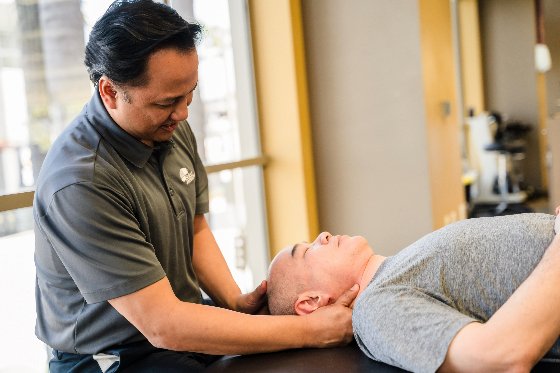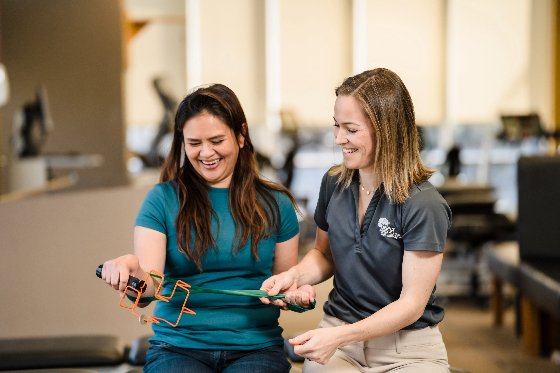Physical therapy vs. opioids
Why physical therapy can be a more powerful medication
Originally posted on 10/12/20, updated 10/24/23 to include new information. | 5 min. read
Rattle … Twist … Pop.
Those are the sounds of millions of opioid pill bottles being opened every day for chronic pain and discomfort.
Get a glass of water … swallow pill … wait for the pain to go away .... come back later for another dose once the pain comes back.
These are the actions of over 100 million American adults trying to find quick relief to their pain. They have no idea they’re most likely suffering from opioid abuse.
The opioid crisis
Many Americans nationwide are victims of the opioid crisis, and it only gets worse as time goes on. This crisis isn’t easy to understand because it’s not explained properly. It’s usually swept under the rug with the assumption that it will get better in time.
Wrong.
It’s only getting worse.
The opioid epidemic in the United States is a public health crisis that has left a trail of devastation in its wake.
It is a complex issue with deep, historical roots dating back 5,000 years to the use of poppies, which is where opium comes from.
Over the course of its development, opium has been modified into morphine, which became the first widely used opioid medication for pain.
Then, heroin was created by chemically modifying morphine. It was marketed by Bayer as a non-addictive alternative to morphine and available over-the-counter until the dangers of using it were revealed.
Flash forward to the late 20th century — the medicinal use of opioids, such as oxycodone and hydrocodone, became more common for pain management in the United States and other countries.
This is what people started relying on, and opioid addiction began to rise quickly.
A trend that continues to present day.
Opioid overdoses/rates
Nearly 750,000 people have died from opioid overdose from 1999-2023.
The rise in opioid overdoses can be seen in three different waves:
- In the 1990s, there was a rise in prescription opioids, including natural and semi-synthetic opioids.
- From 2010 to about 2013, there was a rise in heroin overdose deaths. As access to prescription opioids became restricted, some individuals turned to heroin, which is often cheaper and more readily available.
- Between 2013 and 2021 there was a significant increase in opioid-related deaths involving fentanyl, a synthetic opioid.
These waves of opioid deaths are often bookended by a “quick-fix” rather than a more natural, non-opioid treatment like physical therapy. When it comes to pain and prescribing opioids, the desire for a quick fix can be counterproductive and dangerous.
The health care system can make it seem like prescription opioids are the only answer to pain for individuals, even children.
Remember — they’re all about a faster way to numb your pain.
Incorporating non-opioid options, like physical therapy, can be a safer and more effective way of combating the opioid crisis.
It will also help you live a longer, healthier life without having to rely on medication every day to make the pain go away.
Opioids DO have a role in addressing pain
If you’ve had surgery or wisdom teeth removed, you were probably prescribed a common type of opioid like Vicodin, Percocet or OxyContin to get through the worst of the pain.
You maybe feel bad for a few days, wanting nothing more than to lay on the couch, watch TV and distract yourself from the pain. But sometimes over-the-counter medicine doesn’t help — that’s where prescription opioids can help.
However, it is important that any prescribed opioids aren’t taken for longer than your doctor has recommended.
You should not have to ask for more.
Providers must understand, and communicate with patients, that the abuse of opioids comes with significant risks and more effective solutions to pain are out there.
Pain is not the enemy.
Yes, you want to get rid of it, but fighting it at the surface level, and not at its deeper roots, only masks the pain — it doesn’t make it go away.
Physical therapy is the answer
Pain is an unfortunate reality for many because it can exist on so many levels.
What’s even more difficult is trying to manage it, figure out why it won’t go away and wondering if it’s something you’ll have to live with forever.
There are two types of pain: acute and chronic.
Causes of acute pain include injury, surgery, illness, trauma, childbirth and broken bones.
Chronic pain can be considered a disease state and persist for months or years. This is another epidemic within itself because it affects millions of people every year.
Chronic pain can be a debilitating condition, limiting one’s ability to enjoy life to the fullest. It’s the reason people turn to opioids for relief, because chronic pain tends to persist.
However, there is a beacon of hope in the form of physical therapy.
This holistic approach to health care can provide relief and enhance the overall quality of life for those who suffer from chronic pain.
Physical therapy focuses on improving the body’s mobility, strength and function.
A physical therapist can help address your chronic pain by:
- Pain assessment – They work closely with patients to understand the root cause of their discomfort, which is crucial for developing personalized treatment plans. They work to understand your history and experiences with pain.
- Targeted exercises – Specific exercises are built for your needs. They design routines for you to improve joint stability and decrease your limitations.
- Manual techniques – Physical therapists use massages, joint mobilization and soft tissue manipulation to alleviate muscle tension, especially if you suffer from conditions such as lower back pain, pelvic pain and shoulder pain. This hands-on approach can be effective for chronic pain management.
- Education/lifestyle – Educating patients about proper body mechanics, ergonomics and posture to prevent future pain and injuries is another way physical therapists help contribute to better pain management.
- Specialty services – They may employ various modalities such as cupping, dry needling, aquatic therapy and soft tissue mobilization. Your physical therapist will find what works best for your pain.
- Mind/body connection – Chronic pain often has a psychological aspect. Physical therapists can incorporate relaxation techniques and mindfulness exercises to help patients manage the emotional aspects of pain.
Everybody’s experience with pain is unique. It can be debilitating and difficult to get through every day, and it may seem like there’s no light at the end of the tunnel.
But physical therapy can be that light, and care is tailored to you and your needs.
Physical therapy is much safer compared to medication. It can get you back to your daily activities and improve your quality of life without shackling you to a bottle of pills.
Patients can reduce their dependence on pain medications and discover new pathways to pain management through daily exercises and other forms of treatment.
You shouldn’t wake up every day and wish to stay in bed because your back hurts too much.
You shouldn’t have to take medication every day for relief.
You shouldn’t grow dependent on a pill that is actually doing more harm than good.
Physical therapy can replace your medication; it’s not a quick fix, but rather a long-term solution.
Take back your life and get on with little to no pain.
If you suffer from chronic pain or are looking to break the cycle of opioid medication, you can find a center near you or request an appointment to work with one of our movement experts.




